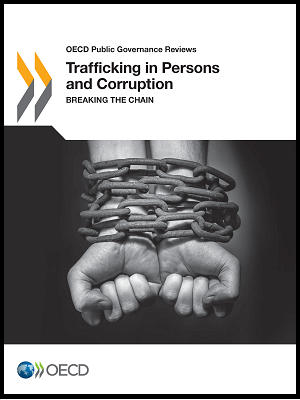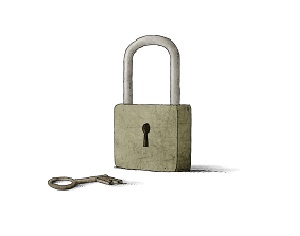Human trafficking and corruption
Organised trafficking cannot take place without corruption.
Trafficking in persons is one of the most lucrative forms of organised crime. Similarly to illicit trade in general, organised trafficking requires systematic corruption.
Prior to the OECD's development of Guiding Principles, there was no international instrument that comprehensively focused on the link between corruption and trafficking in persons and that addressed both.
Addressing these two issues jointly, coupled with better cross-border co-operation, better enforcement and an increased focus on combating corruption is key to curb human trafficking.
In figures
- Over 20.9 million people around the world are estimated to be victims of forced labour.
- Forced labour is estimated to generate US$150 billion per year of illegal profits in the private economy worldwide (ILO).
- 66% of trafficking victims are trafficked across borders.
Corruption and human trafficking
- Human trafficking occurs with the collusion of corrupt officials with criminal gangs.
- Corruption in the trafficking in persons cycle:
- allows the crime to be invisible
- facilitates the impunity once cases of trafficking in persons are detected
- facilitates the execution of the crime, and
- can assure the re-vicitimisation of trafficked victims
- Addressing human trafficking and corruption jointly is more effective than addressing these two issuess individually.

This report presents a set of Guiding Principles on Combatting Corruption Related to Trafficking in Persons and 2 cases studies from Thailand and the Philippines.
Guiding principles
The OECD's Guiding Principles on combatting corruption related to trafficking in persons are grouped under the following headings:
- International cooperation and agreements
- Jointly addressing and investigating trafficking in persons and corruption
- Transparency and integrity frameworks for public officials at risk
- Awareness-raising and prevention measures for Public Officials and the general public
- Improvement of data collection and systematic use of information
- Lift immunity in corruption and trafficking cases
Better data required
- Better data is needed to understand more fully the human trafficking operating environment
- Collecting and sharing this information at the national level would strengthen policies designed to prevent trafficking and protect victims, increase prosecutions, and assess impact of prevention strategies
- The OECD Task Force on Countering Illicit Trade (TF-CIT) was set up to co-ordinate international expertise in the quantification and mapping of illicit markets.
200 girls for sale
Stay updated
The research
See our country reports, comparative evidence and analysis of international practices:






